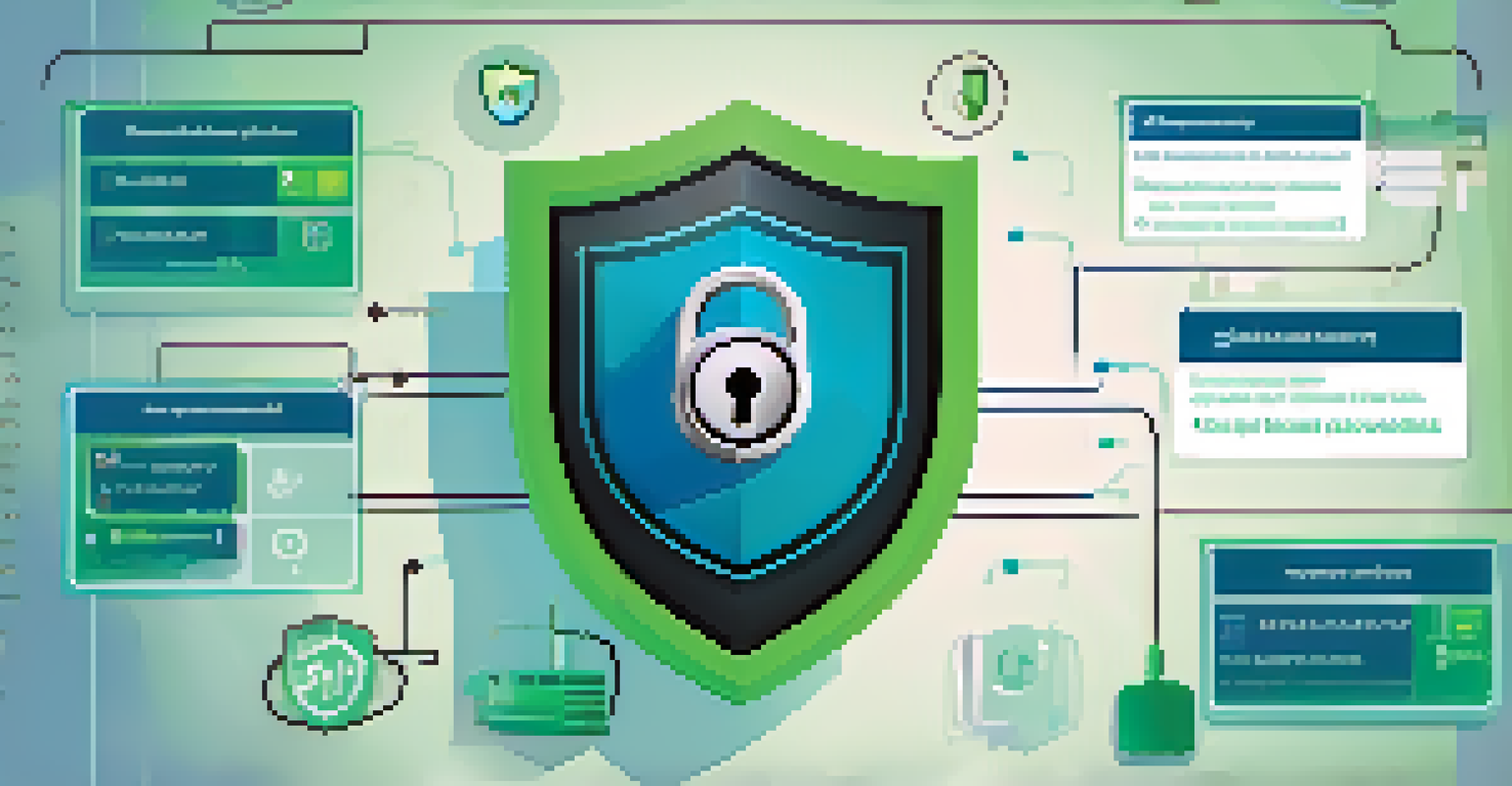How to Secure Your Smart Home from Cyber Threats

Understanding the Risks of Smart Home Devices
Smart home devices are convenient, but they can also be vulnerable to cyber threats. Each connected device adds a potential entry point for hackers, making it essential to understand the risks involved. From smart speakers to security cameras, every gadget you connect to the internet can be targeted by malicious actors.
The greatest risk is not taking one.
For instance, a poorly secured camera might not only expose your privacy but also allow hackers to access your home network. This interconnectedness means that one compromised device can potentially let intruders access others. Therefore, understanding these risks is the first step in securing your smart home.
By being aware of the potential threats, you can take proactive measures to protect your devices and your home. This awareness helps in prioritizing security steps, ensuring that you address the most critical vulnerabilities first.
Update Devices Regularly to Patch Vulnerabilities
One of the simplest yet most effective ways to enhance your smart home security is through regular updates. Manufacturers often release firmware updates that fix security vulnerabilities, and keeping your devices updated is crucial. Ignoring these updates can leave your devices open to exploitation.

For example, if your smart thermostat hasn’t been updated in months, it might have known security flaws that hackers can easily exploit. Setting your devices to update automatically can help ensure you don’t miss important patches. It’s a small task that can significantly bolster your security.
Understand Smart Device Risks
Recognizing the vulnerabilities of connected devices is crucial for securing your smart home.
In addition to firmware updates, review the apps associated with your smart devices. Many times, these apps also receive updates that improve security and functionality, so keeping them up-to-date is equally important.
Use Strong, Unique Passwords for Each Device
Passwords are often the first line of defense against unauthorized access, yet many people use weak or identical passwords across devices. This habit can be disastrous, as a single compromised password can put your entire smart home at risk. It's essential to create strong, unique passwords for each device.
An ounce of prevention is worth a pound of cure.
A good password typically contains a mix of letters, numbers, and symbols, making it harder for cybercriminals to crack. Consider using a password manager to help generate and store complex passwords securely. This tool can simplify your life while enhancing your security.
Additionally, avoid using default passwords that come with devices, as these are often easily accessible online. By taking the time to set strong passwords, you're significantly raising the bar for potential intruders.
Enable Two-Factor Authentication on Devices
Two-factor authentication (2FA) adds an extra layer of security to your smart home devices. With 2FA enabled, even if someone gets hold of your password, they would still need a second form of verification, such as a code sent to your phone. This makes it much harder for unauthorized users to gain access.
Many smart home systems now offer 2FA as a standard feature, so it’s worth checking your device settings. For example, if your smart lock supports 2FA, enabling it can provide peace of mind that your home is more secure. It's a simple step that can make a significant difference.
Regular Updates Enhance Security
Keeping your smart devices and associated apps updated is essential to patch known vulnerabilities.
While enabling 2FA might feel like an extra hassle, remember that it’s about protecting your home. The slight inconvenience of entering a code is far less troublesome than dealing with the aftermath of a security breach.
Secure Your Wi-Fi Network to Protect Connected Devices
Your Wi-Fi network is the backbone of your smart home, and securing it is crucial in preventing unauthorized access. Start by changing the default network name (SSID) and password to something unique and complex. This makes it harder for attackers to guess your network credentials.
Additionally, consider using WPA3 encryption, which is the latest and most secure Wi-Fi encryption standard. This ensures that your data is encrypted and less susceptible to eavesdropping. If your router doesn’t support it, upgrading to a newer model can significantly enhance your security.
Lastly, regularly check which devices are connected to your network. If you notice any unfamiliar devices, it’s a sign that your network might have been compromised. Taking these steps helps create a secure environment for all your smart home devices.
Limit Access and Permissions for Connected Devices
Just like in a physical home, not everyone should have access to every room. The same principle applies to your smart home devices. Review the permissions and access levels granted to each device, ensuring that only necessary devices have access to sensitive data.
For instance, if your smart assistant can control your security system, ensure that it’s only accessible to trusted users. Many devices allow you to customize who can access what, giving you more control over your smart ecosystem. This helps reduce the risk of unauthorized access.
Use Strong Passwords and 2FA
Implementing strong, unique passwords and enabling two-factor authentication significantly boosts your device security.
By limiting access, you’re effectively minimizing the potential attack vectors that hackers could exploit. This proactive approach to permissions creates a more secure smart home environment.
Educate Your Family About Smart Home Security
Security isn’t just about technology; it also involves people. Educating your family about smart home security is vital for maintaining a safe environment. Teach them about the importance of not sharing passwords and recognizing potential phishing scams that target smart devices.
For example, if someone receives an email asking them to click a link to update a device, they should know to verify its authenticity first. Creating a culture of security awareness helps everyone understand their role in protecting the home. This collective responsibility can significantly strengthen your overall security posture.

Consider having regular discussions about security practices and encouraging everyone to stay informed about the latest threats. By fostering a proactive mindset, you create a safer living space for everyone.